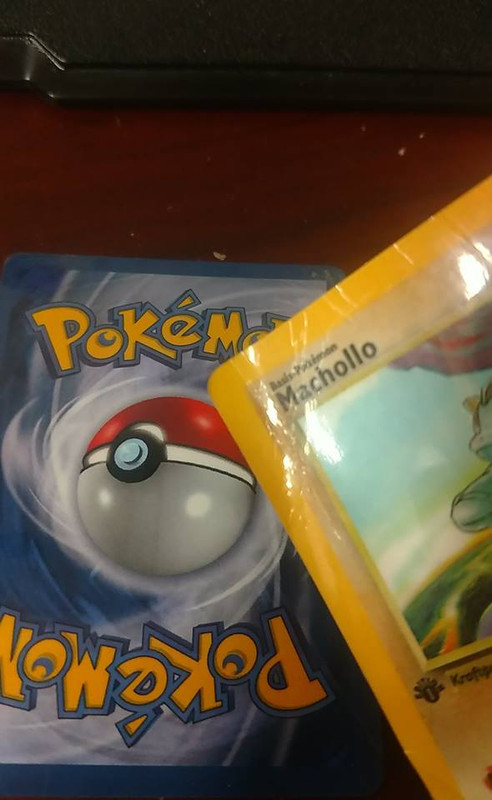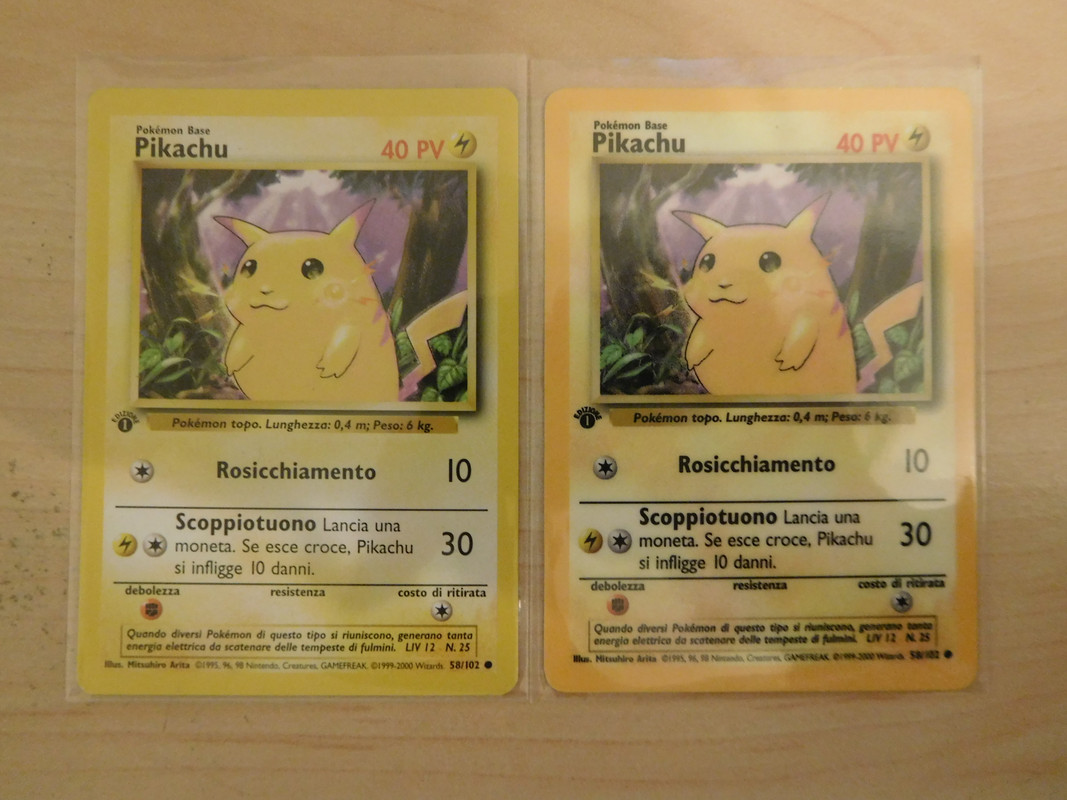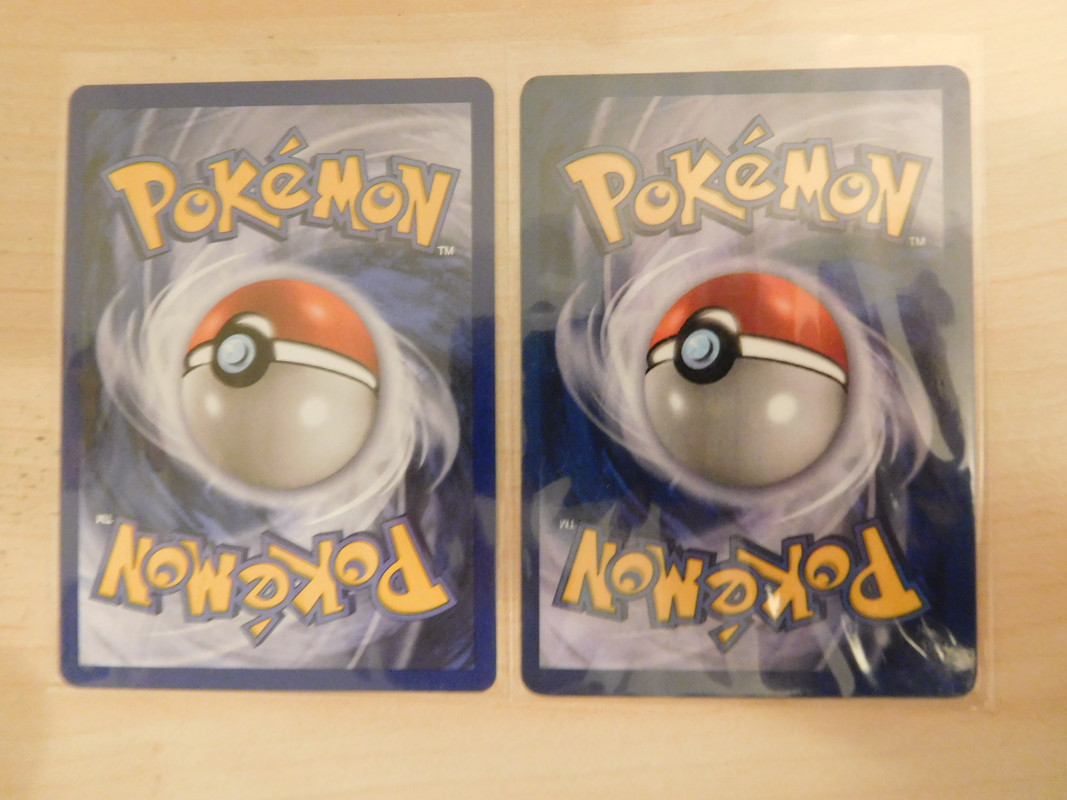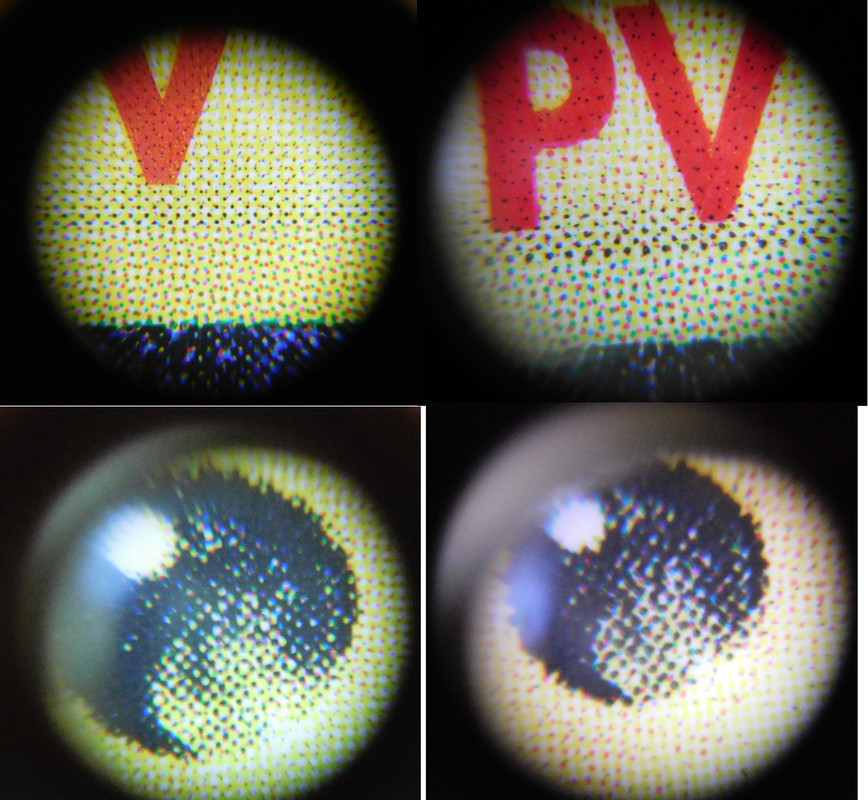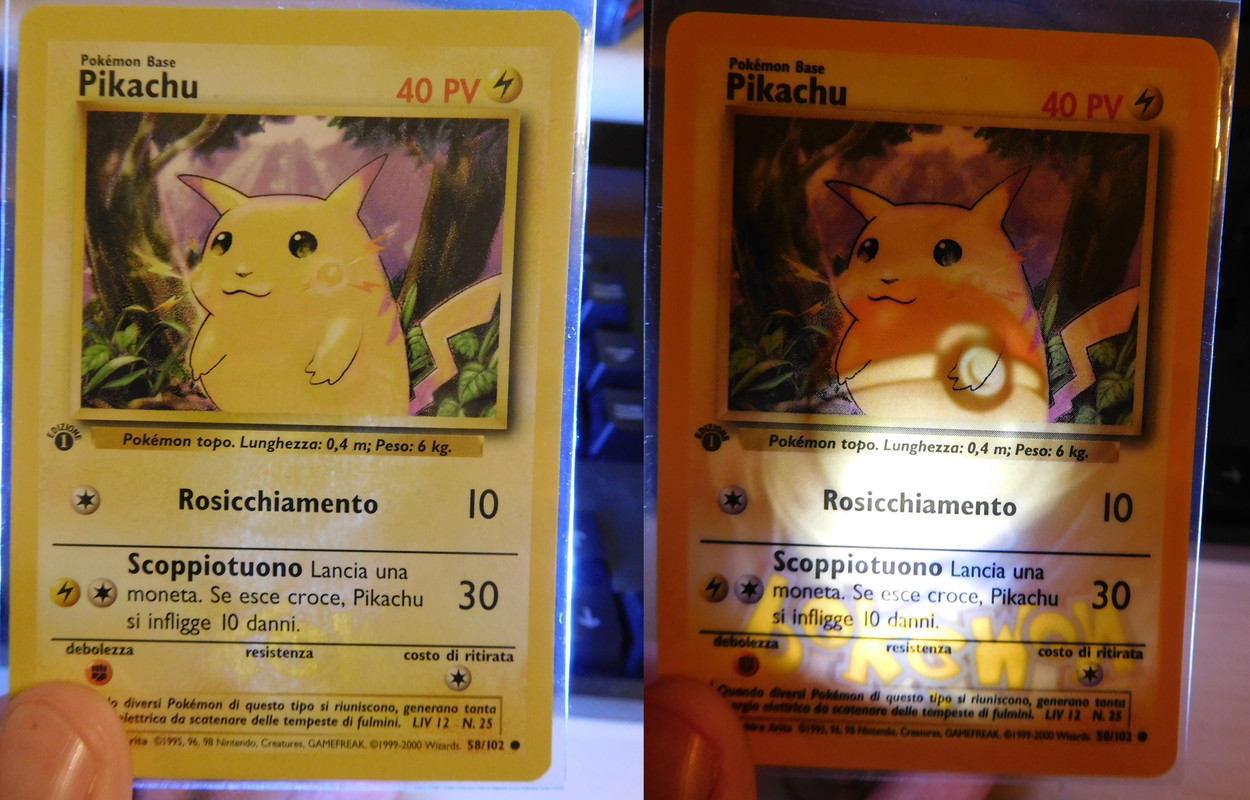First and foremost, some pics and videos for reference:
Sheen Comparison between a normal 1st Edition German Nidoran, the glossy Jigglypuff promo and the (very) glossy Nidoran.
Light Test between a normal Nidoran(top) and the glossy Nidoran(bottom).
Rosette Comparison between normal Nidoran(front) and glossy nidoran(back).
Rosette Comparison 2 between the glossy Jigglypuff(front) and glossy Nidoran(back).
Rosette Comparison 3 between the glossy Nidoran(front) and a Blastoise test print(back).
Side Core Views of the normal Nidoran, glossy Jigglypuff and glossy Nidoran.
Copyright Comparison between a glossy Potion(top), a glossy Nidoran(middle) and a normal Nidoran(bottom). Note the Potion says 1999-2000 while the Nidoran just says 1999.
Black Light test front and back. Normal Nidoran and glossy Jigglypuff on the left, glossy Nidoran and glossy Potion on the right.
Details:
-
The Nidoran is about 1mm taller and wider than a normal card and has some slightly mishapen corners. The Potion is the exact same size as a normal card. As far as I know the rest of the cards are a mix of “rough” and “perfect” cuts.
-
There is no black/blue core. I initially thought that it was made entirely of some plastic material but there does appear to be a layer of paper in the middle.
-
These cards come in several different languages including German, Spanish, Italian. NONE of these cards are in English.
-
To my knowledge these are mostly unique, with the exception of some Energy cards - I’ve seen multiples of Fighting energy.
Let me start by saying I’ve spent the last year trying to figure out what these are. I’ve done some research and talked to several ex-WotC employees who were personally involved in production, three typesetters, two CEO’s of WotC as well as several misprint/oddity collectors who have been looking at odd things and spotting counterfeits for over a decade.
This isn’t some “Is this 6000HP Charizard real?” post.
This post is more along the lines of “I’ve spent months trying to figure out what these are with the help of several 10+ year misprint/oddity experts and we don’t know WTF we’re looking at” kind of post.
The story thus far:
I purchased this card from one of a few vendors who specializes in odd things like misprints and rarities like god books, test prints, proofing pages, etc. He’s been buying and selling odd things and high end cards for 20+ years and his store is only 2.5 hours from the WotC HQ in Seattle/Renton. Every now and then an ex-employee who still resides in the area sell him things, which he unloads into the misprint community. A while ago he bought a stack of these glossy cards from one of the ex-typsetters of WotC, who picked them up off of a “free stuff” table outside of R&D in '03 or '04. I’ve personally spoken to each of them while intentionally leaving out details to see if their stories matched up, and they did.
A “free stuff” table sounds like a suspiciously convenient place to pick up something like a test print but after talking to a trusted source about this, he confirmed that the free stuff table did in fact exist. He also stated that it wasn’t rare for people to end up taking things home instead of trashing them once they weren’t being used for anything anymore. They just weren’t allowed to sell things that were used in development/production while they were still employed by WotC.
I asked him if he knew anything about them. He said that he didn’t personally have anything to do with them but the time frame meant that they must’ve been printed shortly after the Pokemon contract went to WotC. He was told that"they are play test cards that were found to be more expensive than just replacing damaged paper cards", which suggests that perhaps WotC was dabbling with different materials or finishes for the newly acquired game. I asked if he knew anyone else who might know anything about them, which lead me to an earlier typesetter.
I showed typesetter B the images of the card and they said that they didn’t have anything to do with the card either…but they did mention that the layout, font, spacing and separate black text layer seem to be accurate to WotC at the time. Their guess was that these cards are prototypes for promotional cards, like the glossy Jigglypuff.
The next and final typesetter I talked to said the cards looked like something that came out of WotC but they also didn’t have any hand in making them. They had heard rumors that R&D wanted faster access to real cards for playtesting and that they might have outsourced a small batch of cards to a local print shop, which might be why the rosette pattern doesn’t match anything else that was being printed at the time. This is an interesting but strange guess because if they wanted to use the cards for playtesting it would make more sense to print them in English.
I talked to someone who handled the actual printing of some Magic: the Gathering cards and they said that there’s a small chance that it could be some amalgamation of a match print/Fuji proof sheet. These types of proofs are printed on several layers of transparency against a white background but aren’t adhered together. They said that it would be possible for someone to utilize both sides of a Fuji proof, glue everything together and then cut it out as a card but it would be extremely thick and unnecessary to do for any reason. Of the cards I’ve personally handled, they aren’t much thicker than a normal card.
I also asked Vince Calouri but he said he didn’t know anything about them. The last big response I got was from Skaff Elias; I mentioned the previous responses I had gotten from the typesetters and this was his reply:
So that’s where I’m at right now - I’ve been waiting for a response from Rick Arons for the past few weeks to see if the man himself knows anything about them but I haven’t heard anything back yet.
The obvious answer to all this fuss is that “they’re counterfeit”. Believe me, that was my immediate thought when I first saw these. But the deeper I followed the breadcrumbs through the history of WotC, the more interesting the stories and theories got. After all, if counterfeit cards were seized by WotC they would have been destroyed instead of displayed on a table for anyone to come and introduce back into circulation. Even Elias was doubtful that these could be fakes:
Everything considered, I still have no concrete idea what these are any neither does anybody else - official or expert. Admittedly I’m still a novice in regards to understanding the print/production process at WotC but thankfully through the collective knowledge of my peers and acquaintances, we are getting a better idea of what could or couldn’t be the logical explanation of what these are, where they ultimately came from and why they exist.
If anybody has any more information or leads on this type of thing please feel free to contact me. Most of my resources are from the Magic: the Gathering side of WotC and it seems like those who worked on Pokemon are either still working there(and are hard to pry answers out of) or are impossible to find or contact.
